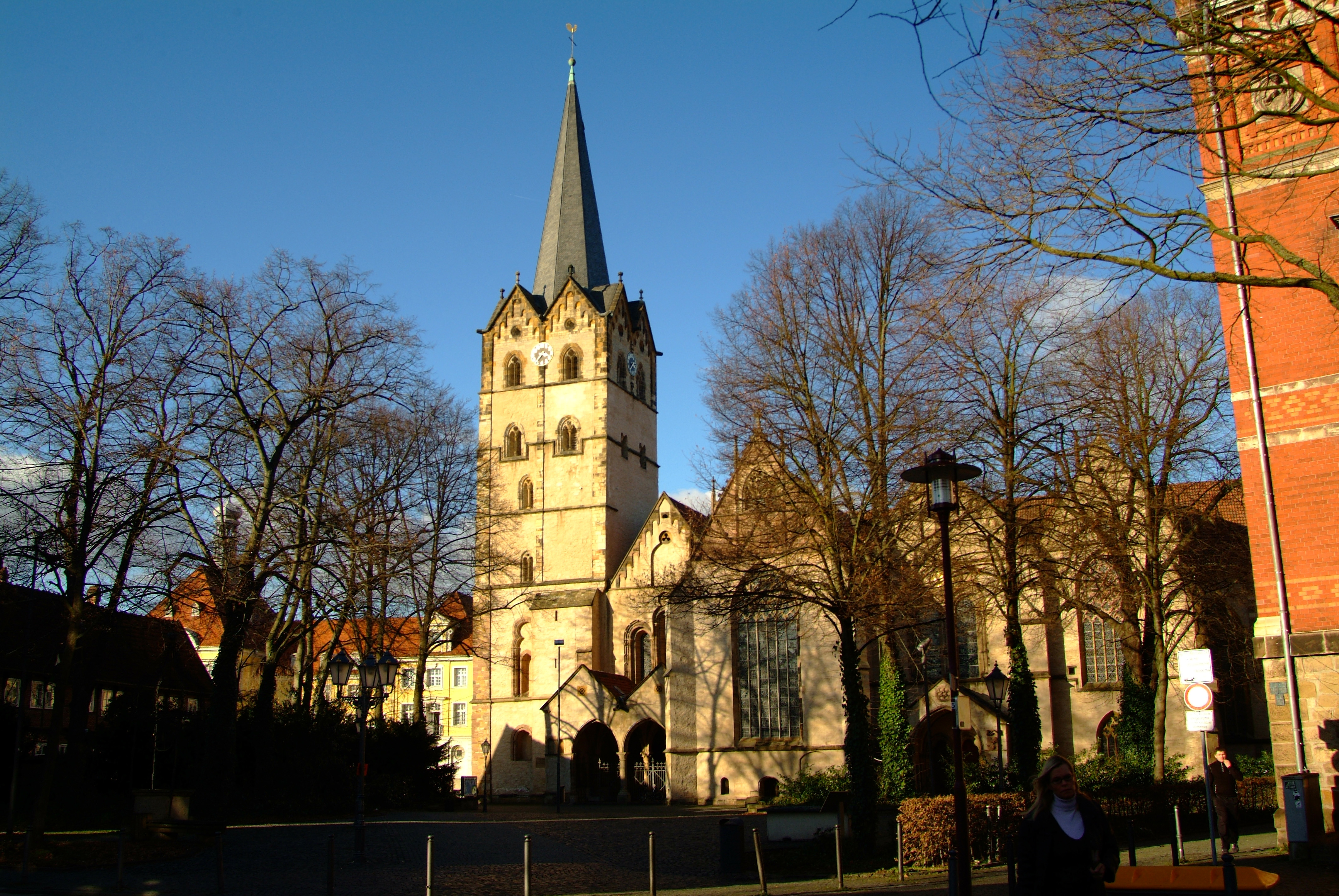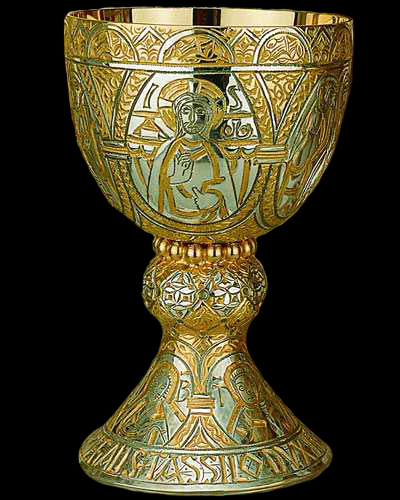|
AD 777
__NOTOC__ Year 777 ( DCCLXXVII) was a common year starting on Wednesday of the Julian calendar. The denomination 777 for this year has been used since the early medieval period, when the Anno Domini calendar era became the prevalent method in Europe for naming years. Events By place Europe * Saxon Wars: King Charlemagne spends Easter in Nijmegen, and leads a large Frankish army to Paderborn, where a general assembly of Carolingian and Saxon leaders had been summoned. Saxon lands are integrated into the Frankish Kingdom, and divided into missionary parishes. Duke Widukind and his followers flee to King Sigfred of Denmark, seeking refuge and support. * Abbasid–Carolingian alliance: Charlemagne receives a request for support from pro-Abbasid rulers in the eastern '' thughur'', or military frontier zone of the Emirate of Córdoba. Several powerful officials and noblemen in northeastern Iberia, such as the governors of Barcelona and Zaragoza, seek to rise up against the ... [...More Info...] [...Related Items...] OR: [Wikipedia] [Google] [Baidu] |
Herford 2009-12-16 (21)
Herford (; nds, Hiarwede) is a town in North Rhine-Westphalia, Germany, located in the lowlands between the hill chains of the Wiehen Hills and the Teutoburg Forest. It is the capital of the district of Herford. Geography Geographic location The former Hanseatic town of Herford is situated in the chain of hills south of the Wiehen Hills (Ravensberg Hills). The highest place is the Dornberg (240 m) in the Schwarzenmoor district; the lowest point (56 m) is located in the Werretal in the Falkendiek district. The River Aa joins the river Werre in the centre of the town. The Stuckenberg is located east of the town. Sports The Herforder EV (Ice Dragons) ice hockey club plays in the Regionaliga, and have enjoyed regular success. They draw an average of 800 fans. Neighbouring towns * West: Enger, Hiddenhausen * North: Löhne * North-East: Vlotho * South-East: Bad Salzuflen (Lippe district) * South-West: Bielefeld. Districts * Altstädter Feldmark * Neustädter Feldmark ... [...More Info...] [...Related Items...] OR: [Wikipedia] [Google] [Baidu] |
Sigfred
Sigfred was an eighth century Danish king who is known to have reigned from before 777 to after 798. Fragments of his reign can be traced via Frankish sources. Assistance to Widukind King Sigfred is first mentioned in 777 when the Saxon chief Widukind, leader of the resistance against Charlemagne, fled Saxony in the face of the Frankish onslaught. Widukind found refuge with Sigfred, but the Frankish annals do not say in detail what kind of assistance the Danish king may have provided. At any rate, Charlemagne made no attempt to subordinate or threaten the Danes during his Saxon campaigns. German chronicles, to better espouse the family tree of Widukind’s heirs, stated that he was married to Sigfred's daughter Geva. Frankish diplomacy In the summer of 782, Charlemagne led his armed forces to the sources of the Lippe River, staying there for some time. On this occasion he received envoys from Sigfred, although the details of the negotiations are not disclosed. Shortly after, ... [...More Info...] [...Related Items...] OR: [Wikipedia] [Google] [Baidu] |
Tassilo III, Duke Of Bavaria
Tassilo III ( 741 – c. 796) was the duke of Bavaria from 748 to 788, the last of the house of the Agilolfings. The Son of Duke Odilo of Bavaria and Hitrud, the Daughter of Charles Martell. Tassilo, then still a child, began his rule as a Frankish ward under the tutelage of his uncle, the Carolingian Mayor of the Palace Pepin the Short (later king) after Tassilo's father, Duke Odilo of Bavaria, had died in 748 and Pepin's half-brother Grifo had tried to seize the duchy for himself. Pepin removed Grifo and installed the young Tassilo as duke, but under Frankish overlordship in 749. Then, in 757, according to the ''Royal Frankish Annals'', Tassilo became Pepin's vassal and the lord for his lands at an assembly held at Compiegne. There, he is reported to have sworn numerous oaths to Pepin and, according to reports that may have been written much later, promised fealty to him and his sons, Charles and Carloman. However, the highly legalistic account is quite out of character for t ... [...More Info...] [...Related Items...] OR: [Wikipedia] [Google] [Baidu] |
North Africa
North Africa, or Northern Africa is a region encompassing the northern portion of the African continent. There is no singularly accepted scope for the region, and it is sometimes defined as stretching from the Atlantic shores of Mauritania in the west, to Egypt's Suez Canal. Varying sources limit it to the countries of Algeria, Libya, Morocco, and Tunisia, a region that was known by the French during colonial times as "''Afrique du Nord''" and is known by Arabs as the Maghreb ("West", ''The western part of Arab World''). The United Nations definition includes Morocco, Algeria, Tunisia, Libya, Egypt, Sudan, and the Western Sahara, the territory disputed between Morocco and the Sahrawi Republic. The African Union definition includes the Western Sahara and Mauritania but not Sudan. When used in the term Middle East and North Africa (MENA), it often refers only to the countries of the Maghreb. North Africa includes the Spanish cities of Ceuta and Melilla, and plazas de s ... [...More Info...] [...Related Items...] OR: [Wikipedia] [Google] [Baidu] |
Maghreb
The Maghreb (; ar, الْمَغْرِب, al-Maghrib, lit=the west), also known as the Arab Maghreb ( ar, المغرب العربي) and Northwest Africa, is the western part of North Africa and the Arab world. The region includes Algeria, Libya, Mauritania (also considered part of West Africa), Morocco, and Tunisia. The Maghreb also includes the disputed territory of Western Sahara (controlled mostly by Morocco and partly by the Sahrawi Arab Democratic Republic) and the Spanish cities Ceuta and Melilla.Article 143. As of 2018, the region had a population of over 100 million people. Through the 18th and 19th centuries, English sources often referred to the region as the Barbary Coast or the Barbary States, a term derived from the demonym of the Berbers. Sometimes, the region is referred to as the Land of the Atlas, referring to the Atlas Mountains, which are located within it. The Maghreb is usually defined as encompassing much of the northern part of Africa, including ... [...More Info...] [...Related Items...] OR: [Wikipedia] [Google] [Baidu] |
Ibadi
The Ibadi movement or Ibadism ( ar, الإباضية, al-Ibāḍiyyah) is a school of Islam. The followers of Ibadism are known as the Ibadis. Ibadism emerged around 60 years after the Islamic prophet Muhammad's death in 632 AD as a moderate school of the Khawarij movement, although contemporary Ibāḍīs strongly object to being classified as Kharijites. Ibadism is currently the largest Muslim denomination in Oman, but is also practised to a lesser extent in Algeria, Tunisia, and Libya. Throughout Islamic history, particularly under the Umayyads and the Almoravids, and continuing to the modern era, Ibadis have faced religious persecution in the Muslim world. History Background The Ibadis emerged as a moderate school of the Kharijites, an Islamic sect that originated from the Muhakkima (Arabic: محكمة) and al-Haruriyya (Arabic: الحرورية). The Muhakkima and al-Haruriyya were supporters of Ali in the first Muslim civil war who then abandoned the Alid cause af ... [...More Info...] [...Related Items...] OR: [Wikipedia] [Google] [Baidu] |
Imam
Imam (; ar, إمام '; plural: ') is an Islamic leadership position. For Sunni Muslims, Imam is most commonly used as the title of a worship leader of a mosque. In this context, imams may lead Islamic worship services, lead prayers, serve as community leaders, and provide religious guidance. Thus for Sunnis, anyone can study the basic Islamic sciences and become an Imam. For most Shia Muslims, the Imams are absolute infallible leaders of the Islamic community after the Prophet. Shias consider the term to be only applicable to the members and descendents of the '' Ahl al-Bayt'', the family of the Islamic prophet Muhammad. In Twelver Shiasm there are 14 infallibles, 12 of which are Imams, the final being Imam Mahdi who will return at the end of times. The title was also used by the Zaidi Shia Imams of Yemen, who eventually founded the Mutawakkilite Kingdom of Yemen (1918–1970). Sunni imams Sunni Islam does not have imams in the same sense as the Shi'a, an importan ... [...More Info...] [...Related Items...] OR: [Wikipedia] [Google] [Baidu] |
Rustamid Dynasty
The Rustamid dynasty () (or ''Rustumids'', ''Rostemids'') was a ruling house of Ibāḍī imāms of Persian descent centered in Algeria. The dynasty governed as a Muslim theocracy for a century and a half from its capital Tiaret (present day Tagdemt) until the Ismaili Fatimid Caliphate defeated it. Rustamid authority extended over what is now central and western Algeria, parts of southern Tunisia, and the Jebel Nafusa and Fezzan regions in Libya as far as Zawila. History The Ibāḍī movement reached North Africa by 719, when the missionary Salma ibn Sa'd was sent from the Ibādī ''jama'a'' of Basra to Kairouan. By 740, their efforts had converted the major Berber tribes of Huwara around Tripoli, in the Nafusa Mountains and at Zenata in western Tripolitania. In 757 (140 AH), a group of four Basra-educated missionaries including ʻAbd ar-Rahmān ibn Rustam proclaimed an Ibāḍī imamate, starting an abortive state led by Abu l-Khattab Abdul-A'la ibn as-Samh which la ... [...More Info...] [...Related Items...] OR: [Wikipedia] [Google] [Baidu] |
Umayyad Caliphate
The Umayyad Caliphate (661–750 CE; , ; ar, ٱلْخِلَافَة ٱلْأُمَوِيَّة, al-Khilāfah al-ʾUmawīyah) was the second of the four major caliphates established after the death of Muhammad. The caliphate was ruled by the Umayyad dynasty ( ar, ٱلْأُمَوِيُّون, ''al-ʾUmawīyūn'', or , ''Banū ʾUmayyah'', "Sons of Umayyah"). Uthman ibn Affan (r. 644–656), the third of the Rashidun caliphs, was also a member of the clan. The family established dynastic, hereditary rule with Muawiya ibn Abi Sufyan, long-time governor of Greater Syria, who became the sixth caliph after the end of the First Fitna in 661. After Mu'awiyah's death in 680, conflicts over the succession resulted in the Second Fitna, and power eventually fell into the hands of Marwan I from another branch of the clan. Greater Syria remained the Umayyads' main power base thereafter, with Damascus serving as their capital. The Umayyads continued the Muslim conquests, incorpo ... [...More Info...] [...Related Items...] OR: [Wikipedia] [Google] [Baidu] |
Emirate Of Córdoba
The Emirate of Córdoba ( ar, إمارة قرطبة, ) was a medieval Islamic kingdom in the Iberian Peninsula. Its founding in the mid-eighth century would mark the beginning of seven hundred years of Muslim rule in what is now Spain and Portugal. The territories of the Emirate, located in what the Arabs called ''Al-Andalus'', had formed part of the Umayyad Caliphate since the early eighth century. After the caliphate was overthrown by the Abbasids in 750, the Umayyad prince Abd ar-Rahman I fled the former capital of Damascus and established an independent emirate in Iberia in 756. The provincial capital of Córdoba ( ar, قرطبة, links=no ) was made the capital, and within decades grew into one of the largest and most prosperous cities in the world. After initially recognizing the legitimacy of the Abbasid Caliphate of Baghdad, in 929 Emir Abd al-Rahman III declared the caliphate of Córdoba, with himself as caliph. History Roderic was a Visigothic king who ruled Hispa ... [...More Info...] [...Related Items...] OR: [Wikipedia] [Google] [Baidu] |
.jpg)




.jpg)